Facilities
Below are some of the facilities and technologies we currently utilize in our labs.
NanoNC Composite Electrospinner(Model #ESR200PR3D) |
The NanoNC Composite Electrospinner features a unique dual‐head nozzle system with multi‐axis robots enabling 2‐solution coaxial electrospinning of synthetic nanofibers. A variety of materials can be spun, producing both homogeneous nanofibers and core‐shell composite fibers, through the use of two collectors, the flat plate and the rotating drum. The NanoNC Electrospinner provides full control of various operating parameters including drum rotating speed, working distance and angle, precursor feeding rate, and voltage fields. Currently, this equipment is used to spin highly oriented nanofibers with controlled dimensions, porosities, and surface morphologies. |
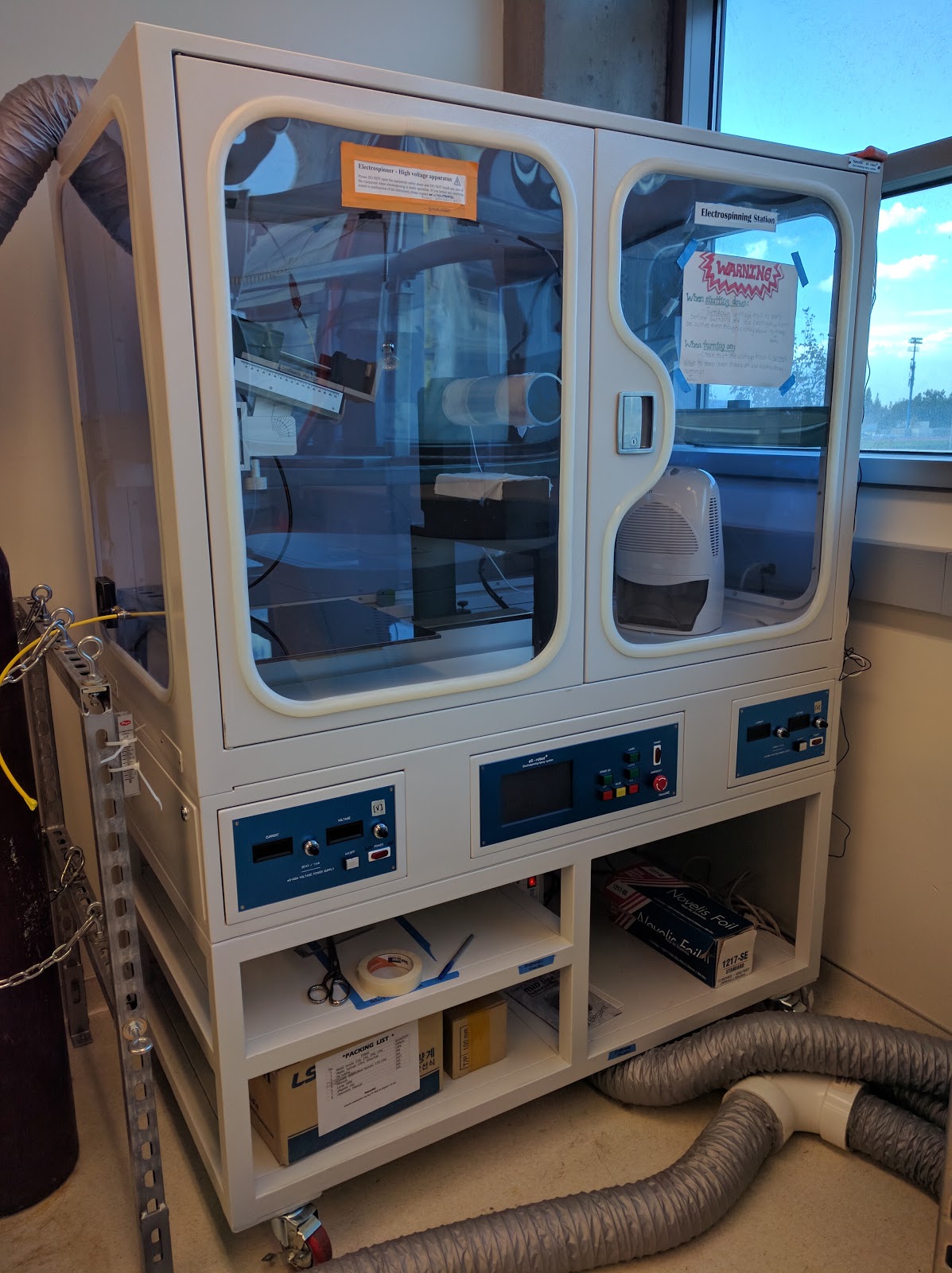 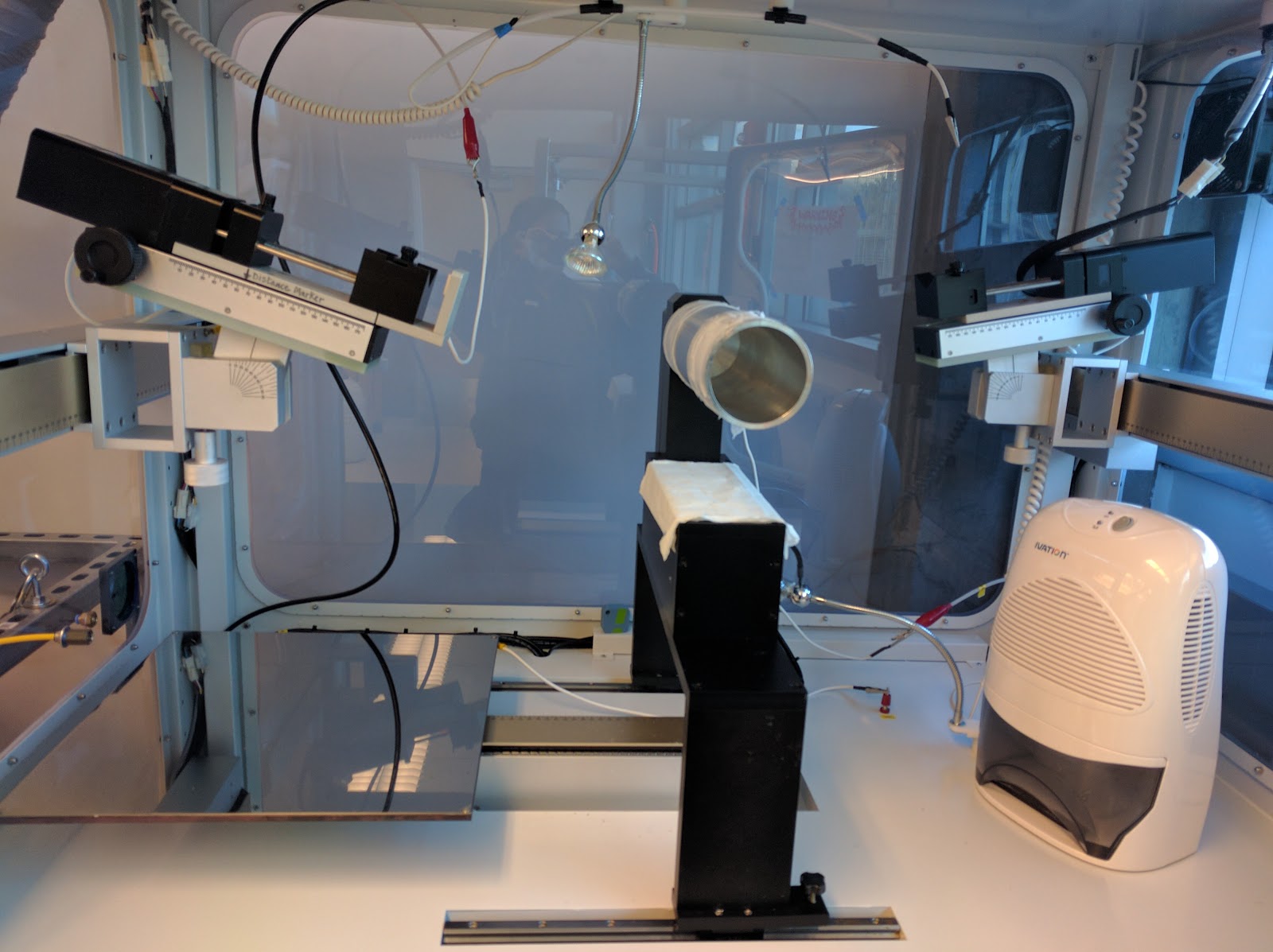 |
|---|---|---|
Composites Prototyping |
Our composites lab includes fiber cutting station and composites fabrication bench equipped with materials for wet layup, vacuum assisted infusions and prepreg composite production. We have the capabilities of producing a variety of curved structures and flat panels 1 meter 1 meter. |
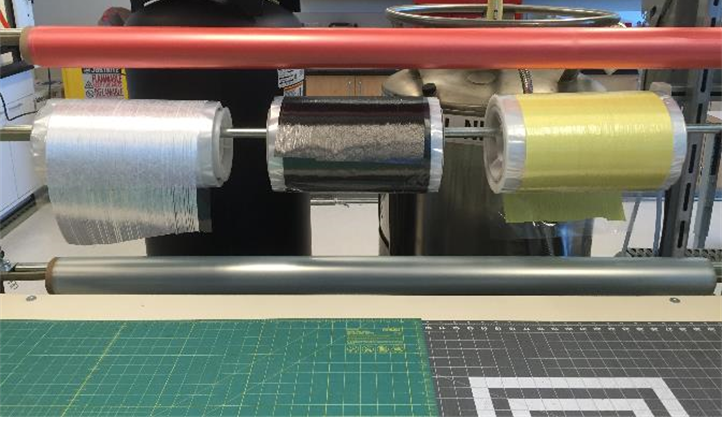 |
3D Systems ProX 200 |
The ProX 200 is a selective laser sintering printer, which uses a variable power (300 W max) laser to fabricate complex metal parts. The printer features a build envelope capacity of (W x D x H): 140 x 140 x 125 mm (5.51 x 5.51 x 4.92 in). Maximum feature resolution is approximately 80 microns in the x‐ and y‐directions and 20 microns in the z‐direction |
|
DeltaWASP 3D Printer |
DeltaWASP 20 40 is the powerful, versatile and fastest delta 3D printer with a cylindrical print area of 20cm - 40cm tall and a max resolution of 50 microns. With an enclosed build chamber and heated print bed the Wasp is capable of printing most 1.75 mm filaments including PLA, ABS, Flex, Nylon and PETG. Changeable extruders provide the versatility to print ceramic materials as well as the conventional polymers. |
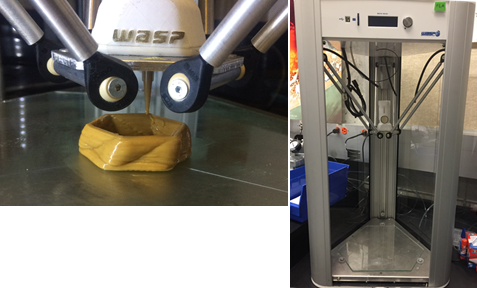 |
FormLabs Form2 3D Printer |
The Form2 provides industrial quality 3D printing in a small form factor. At the heart of the machine is a powerful optical engine guided by custom-built galvanometers that work in tandem with high precision 250mW laser to draw parts at 25-100 micron resolution. Allowing for relatively large prints, the maximum build volume is 145 x 145 x 175 mm. This machine is also equipped with a variety of Engineering Resins are formulated to withstand extensive testing and perform under stress. |
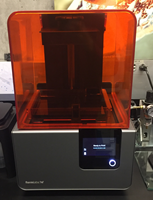 |
Convection Ovens |
Our convection ovens are able to reach temperatures of up to 250°C. | |
Tube Furnaces |
|
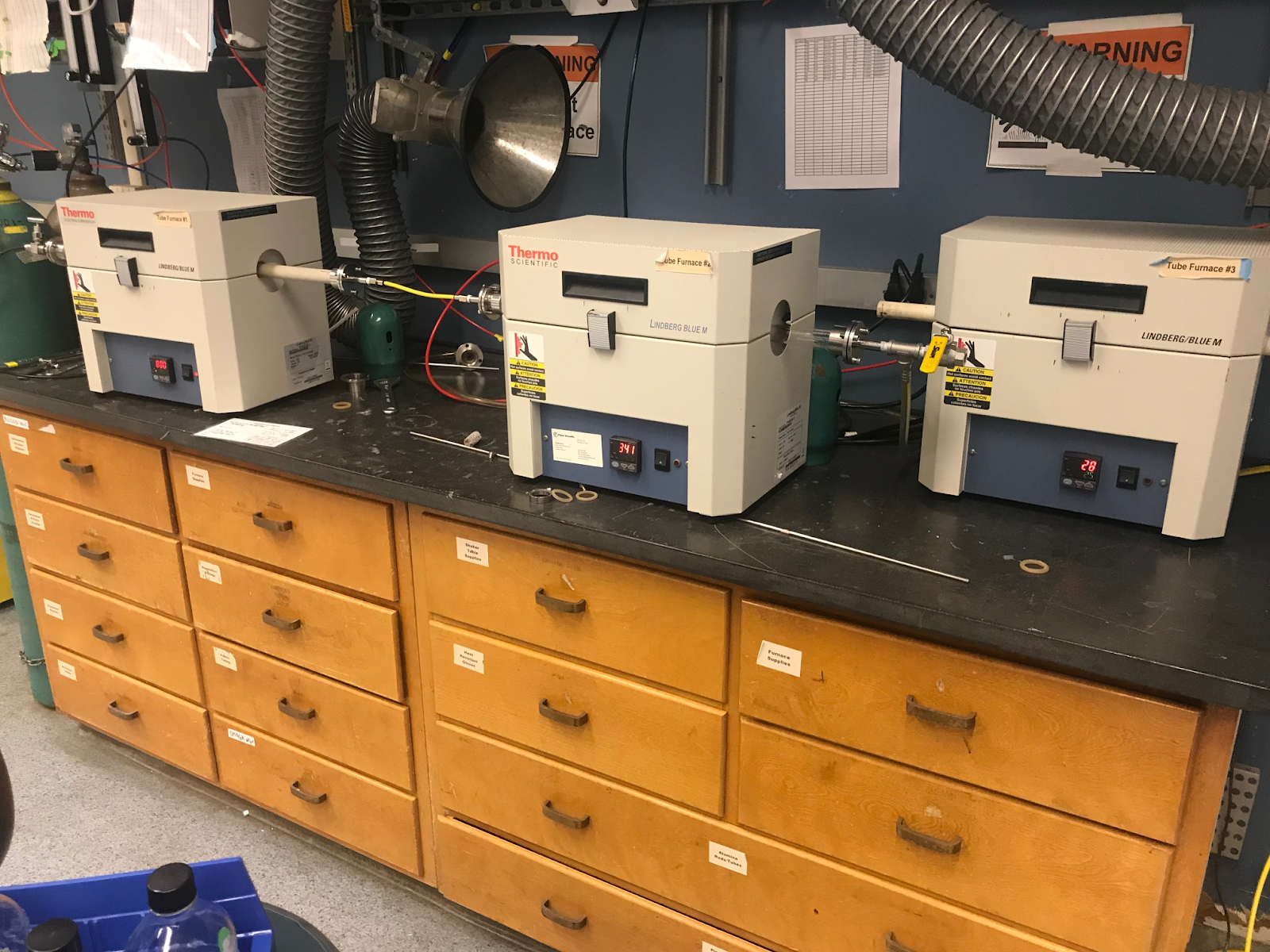 |
Thinky® Planetary Centrifugal Mixer |
The planetary centrifugal mixer rapidly disperses materials uniformly and deaerates simultaneously. Revolution causes powerful acceleration that promotes deaeration, and, at the same time, rotation generates convection of materials in the container, achieving quick dispersion and deaeration. The mixer is optimal for rapid mixing and deaeration of polymer mixtures, like epoxy resin, and colloidal suspensions. |
 |
Centrifuges |
Our centrifuges are capable of a maximum of 13,000 rpm. |
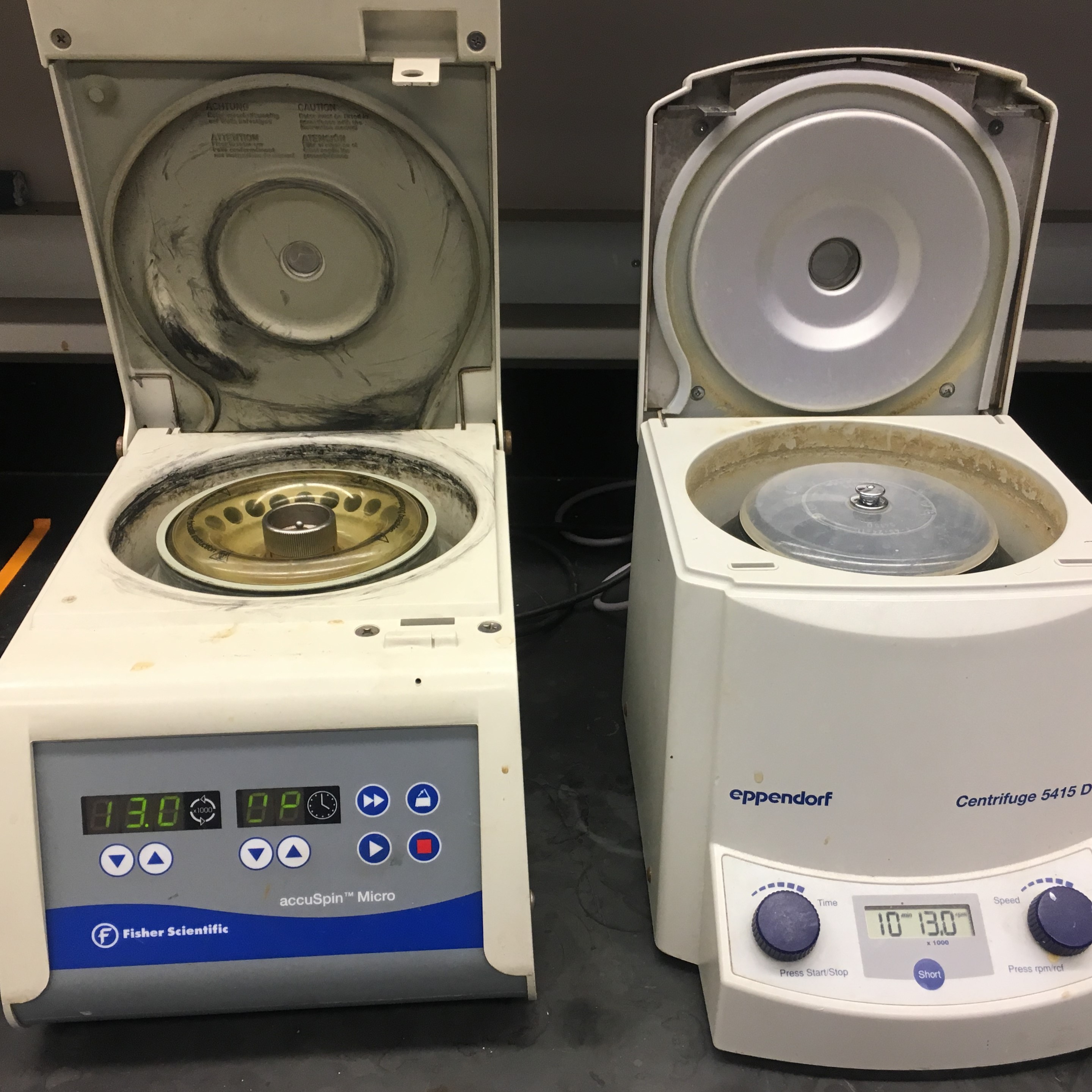 |
Chemat Spin Coater |
Stage 1 speeds 500-1,500 rpm for 2-18 seconds; stage 2 speeds 1,000-8,000 rpm for 3-60 seconds. |
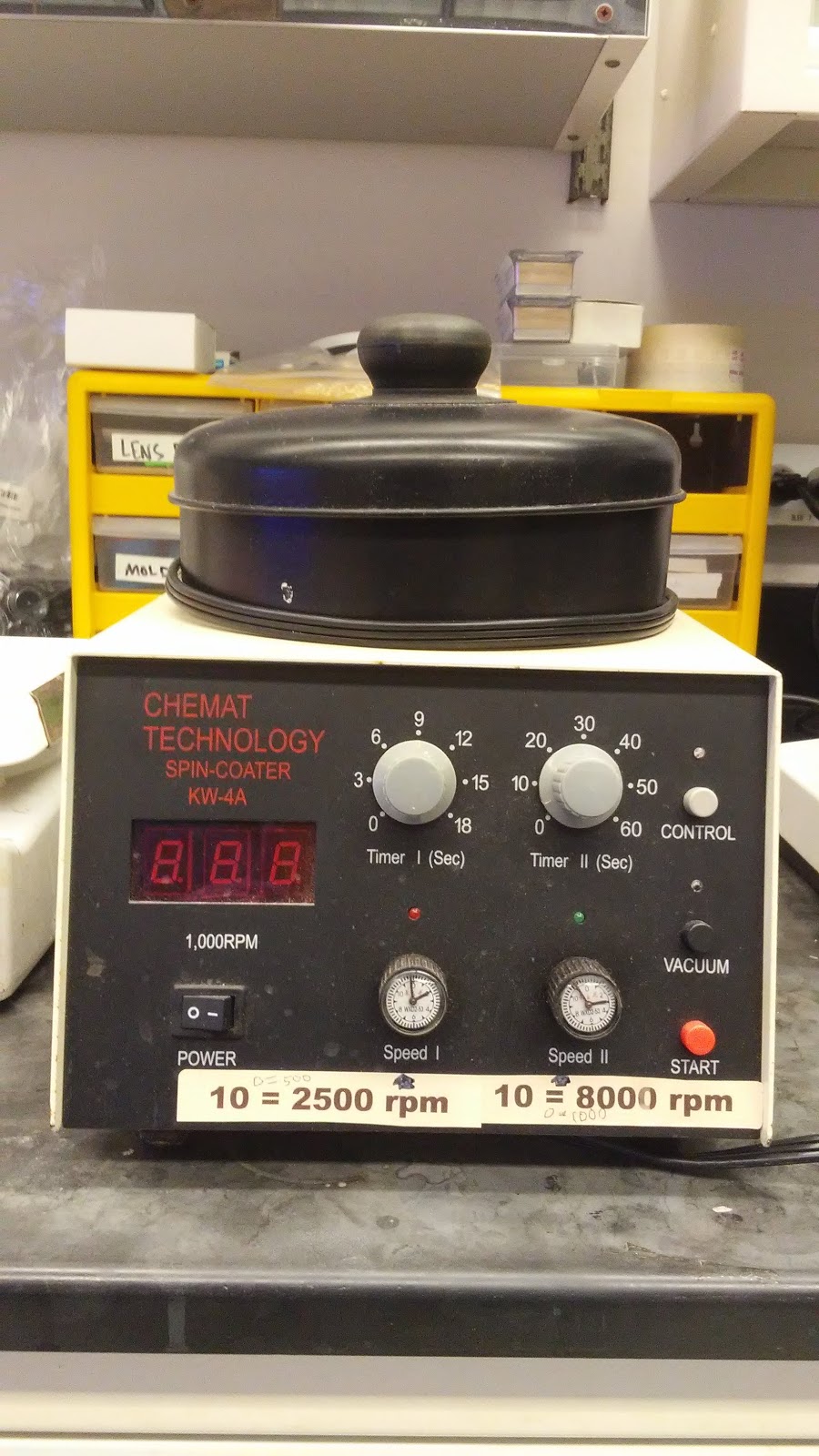 |
Brookfield Digital Rheometer |
The Brookfield DV-III programmable rheometer measures fluid parameters of shear stress and viscosity at given shear rates. Cone-plate and T-bar spindle attachments allow for the measurement of fluids with viscosity ranging from 0.15 cP to 9,000,000 cP. Measurements can be made with as little as 0.5 mL of solution. A water bath also provides continuous flow of water to a jacket surrounding the cup, allowing for precise control of the temperature of your solution during measurement. |
|
Muffle Furnace |
Thermo-Fisher Lindberg Blue model. |
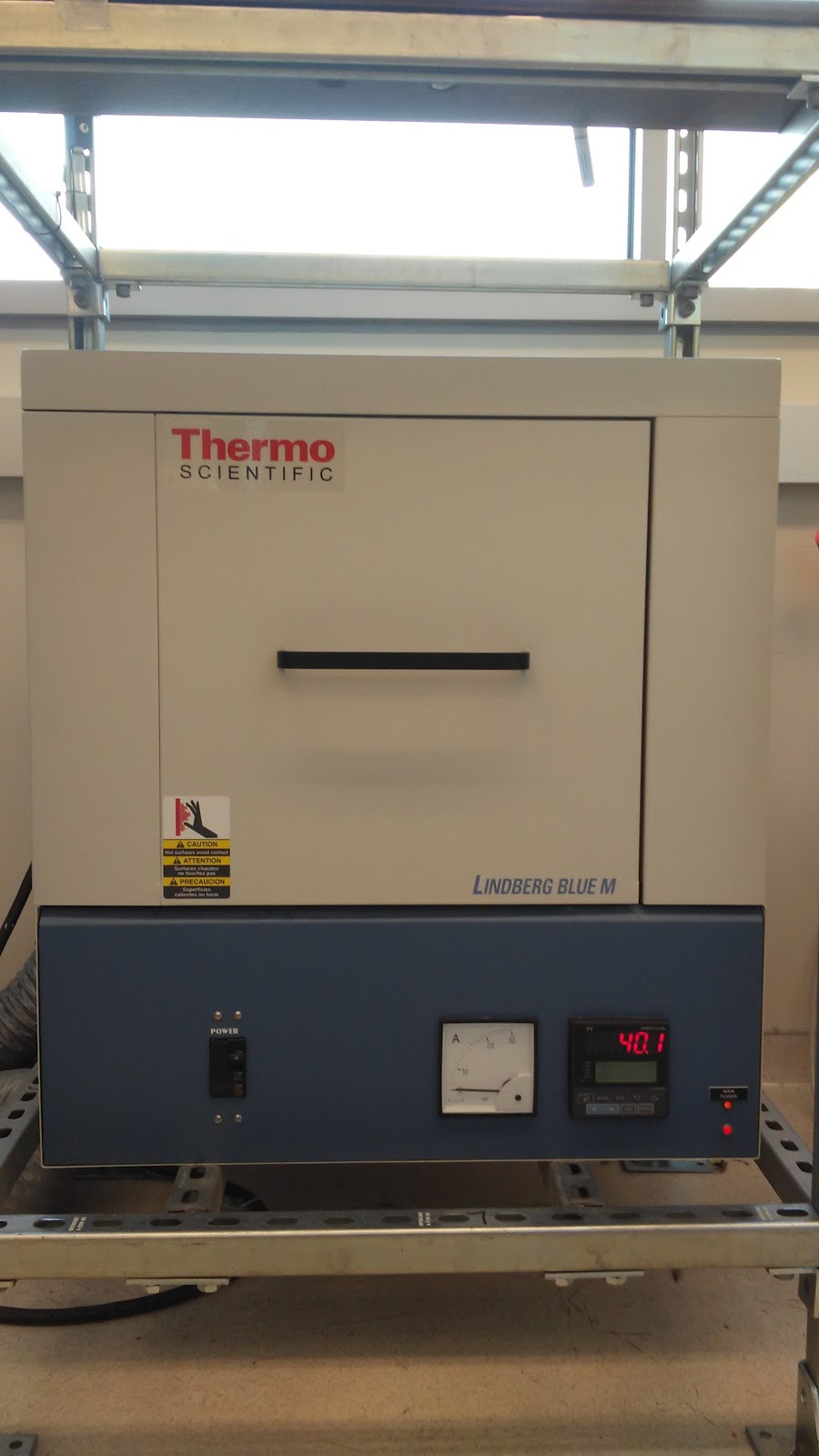 |
Hydrothermal Reactors |
Our hydrothermal reactors and Teflon liners in different sizes. |
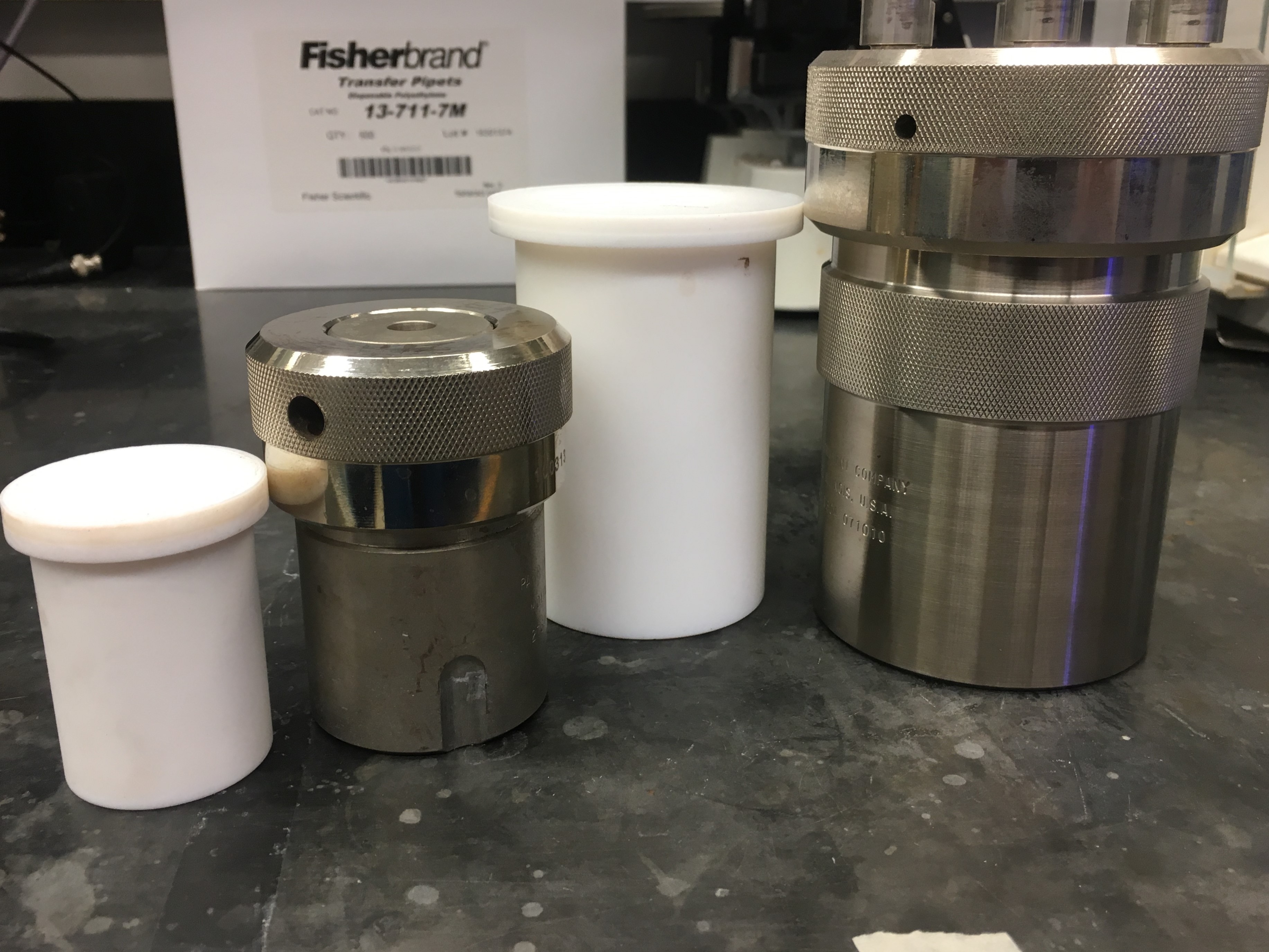 |
Centrifugal Jet Spinner |
|
Agilent Cary 620 FTIR Microscope |
This FTIR Microscope with a motorized stage has two high‐sensitivity detectors capable of transmittance, reflectance, and ATR measurements from 850‐4000 cm‐1. The FPA detector is capable of mapping a 64x64 or 128x128 grid with a spatial resolution of 5.5 microns in one scan, with the ability to tile multiple scans. Using a Germanium ATR crystal with the FPA detector increases the resolution to 1.1 micrometers, although it sacrifices the tiling capabilities. The MCT detector can image a 40 to 100 micron square area with higher sensitivity and quicker scans. It also has 5x and 15x objectives and a built in camera for locating regions of interest. |
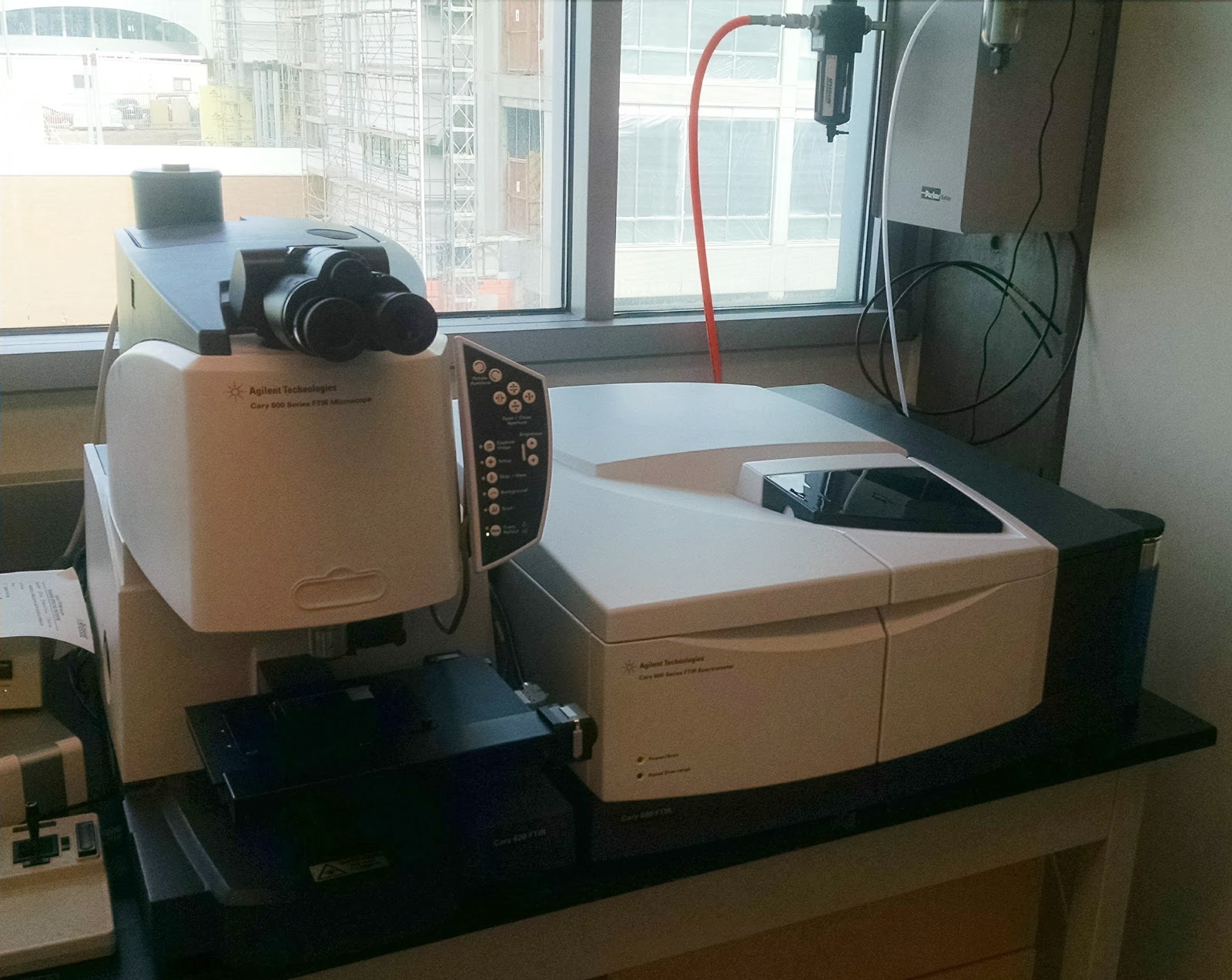 |
|---|---|---|
TESCAN MIRA3 SEM |
The TESCAN MIRA3 GMU is a field emission SEM using the latest technology, such as new improved high‐performance electronics for faster image acquisition, an ultra‐fast scanning system with compensation for static and dynamic image aberrations. The MIRA3 utilizes unique 4‐lens electron optical design that provides a wide range of imaging and scanning modes, including: high resolution imaging (Resolution mode), ultra‐low magnification imaging (Wide Field mode), high depth of field imaging (Depth mode), Live 3D Stereoscopic imaging, and Selected Area Electron Channeling (beam rocking for acquisition of electron diffraction images). A variety of detectors are available: retractable BSE, In‐Beam BSE, In‐Beam SE, and Low Vacuum Secondary Electron TESCAN Detector (LVSTD) for low‐vacuum‐mode imaging. The system is also fitted with an Energy Dispersive X‐ray Spectrometer system, featuring dual 60 mm2 Bruker XFlash® detectors, which provides large area elemental mapping capabilities. |
|
Hysitron TI‐950 TriboIndenter Nanoindenter |
The Hysitron TI‐950 TriboIndenter nanoindenter has been developed as an automated, high throughput instrument to support the numerous nanomechanical and nanotribological characterization techniques. Proprietary capacitive transducer technology provides unprecedented measurement sensitivity (<30 nN, >0.2 nm), accuracy, and reliability during the nanoindentation process. Electrostatic actuation uses little current, enabling superior drift characteristics that result in faster data acquisition, higher accuracy, and better repeatability.
|
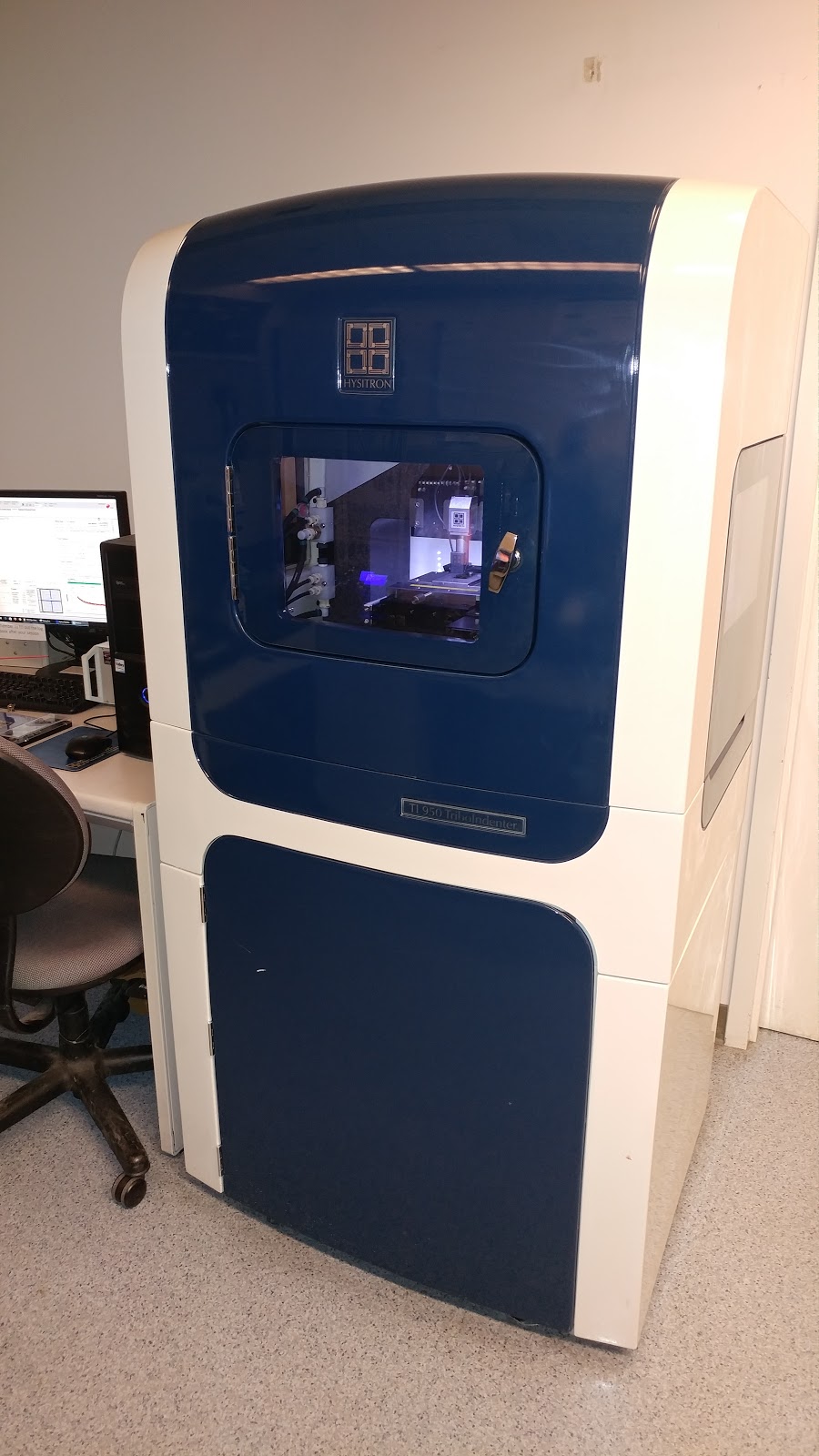 |
Bose Electroforce Dynamic Mechanical Tester |
The ElectroForce 3200 test instrumets uses acoustic motors to perform experiments using a 0.5 N or 450 N maximum force load cell. With the versatility of static to 300 Hz frequency response, the table‐top configuration is adaptable to a variety of biomedical research and engineered materials test applications, including torsion testing, creep under dynamic loading and special environments. This load frame is capable of 3‐point bend, 4‐point bend, compression, and tensile testing. |
 |
Micro Materials NanoTest Vantage |
Nanoimpact and fatigueNano‐impact testing is particularly suitable for high strain rate contact testing. The strain rates of nano‐impact testing are typically 100‐1000 s‐1, much greater than the nano‐indentation strain rates of 0.0001 ‐ 0.01 s‐1Nano‐impact testing to assess the toughness and fatigue fracture resistance of thin films and coatings. Nano‐impact testing is also able to mimic highly loaded repetitive contact situations. This includes assessing the durability of high speed machining tools for hard to cut aerospace materials and the erosive wear of aerospace engines in normal working environments. Nano‐scratch and wearResearchers interested in producing thin films and coatings (from a few nm to about 1 μm thick) for improved wear resistance in thin film applications need to optimize both the mechanical properties and tribological performance.
Humidity CellA full range of humidity from 10% to 90% is therefore possible, irrespective of ambient room conditions. Compatible with all impact, fatigue, and scratch testing. |
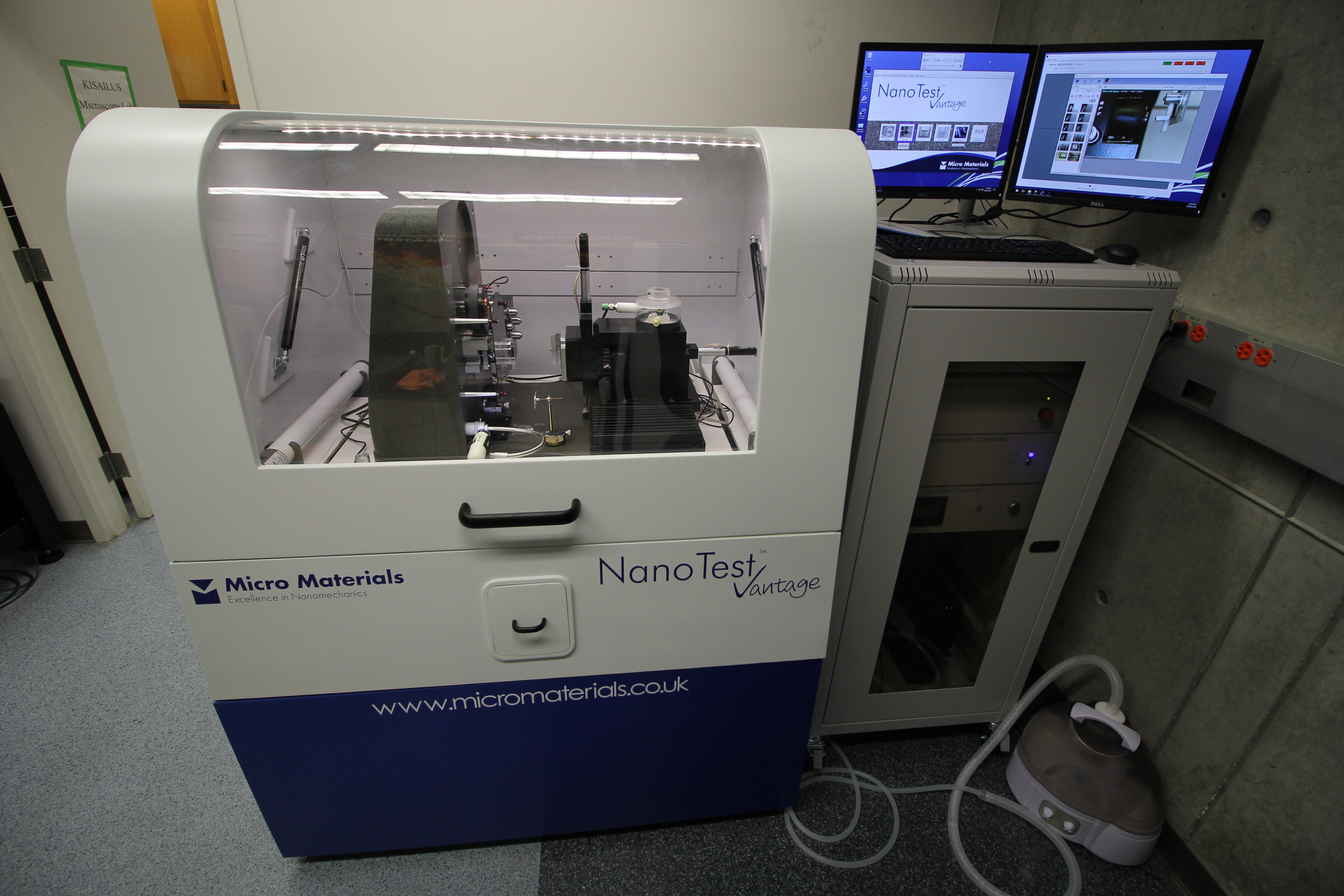 |
Allied MultiPrep Automated Polisher |
|
|
Allied TechCut4 Precision Low Speed Saw |
The low speed diamond saw allows for cutting and sectioning of biological and biomimetic composite materials. Precise serial sectioning can be achieved using a micrometer attached to the positioning arm. Saw speed can be varied from 10 to 500 RPM. |
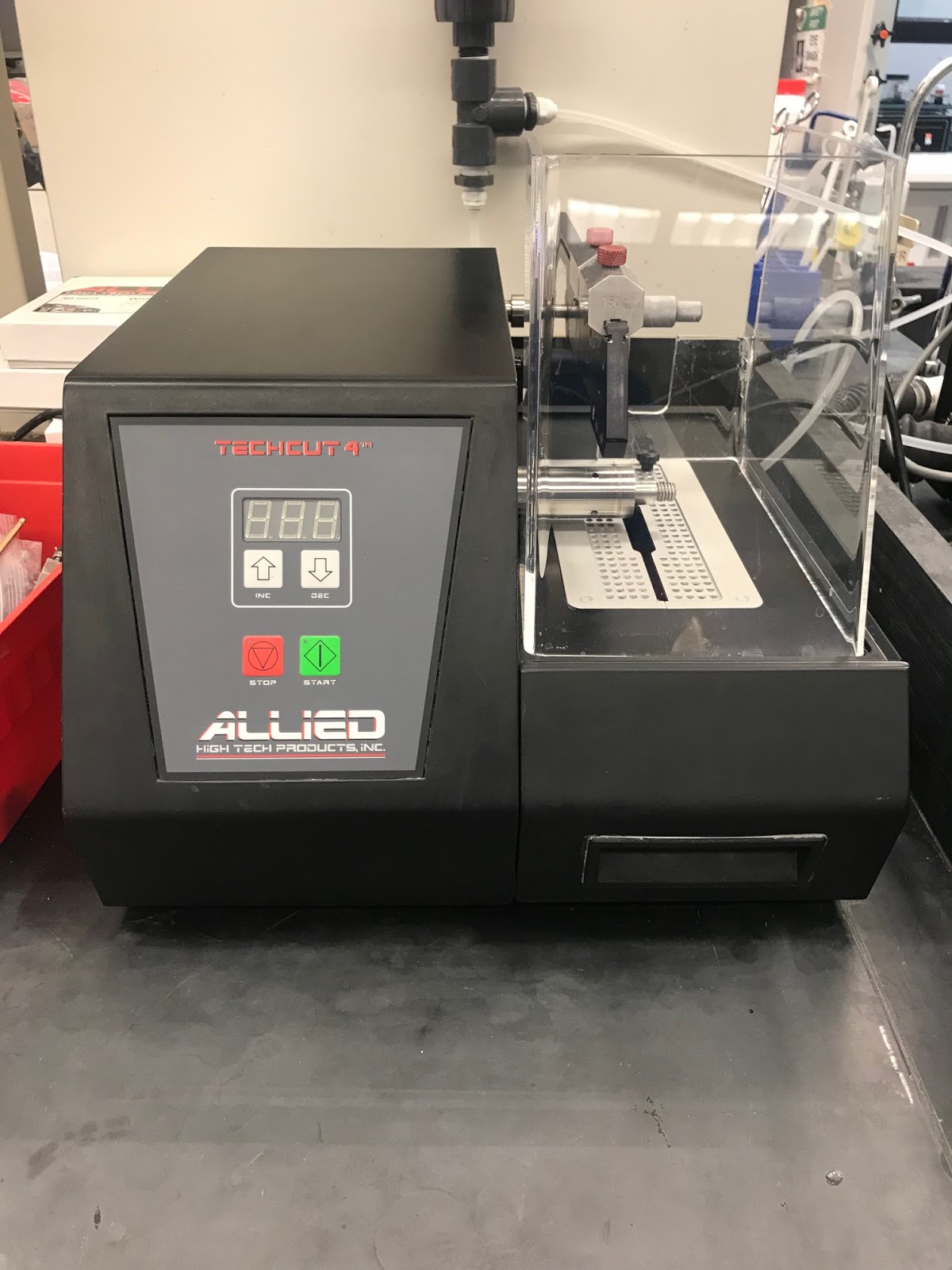 |
Zeiss microscope |
Optical microscope provides imaging in bright‐field, dark‐field, and differential contrast modes at magnifications of 2.5x, 10x, 20x, and 100x. The microscope can be operated in both reflectance and transmission modes. |
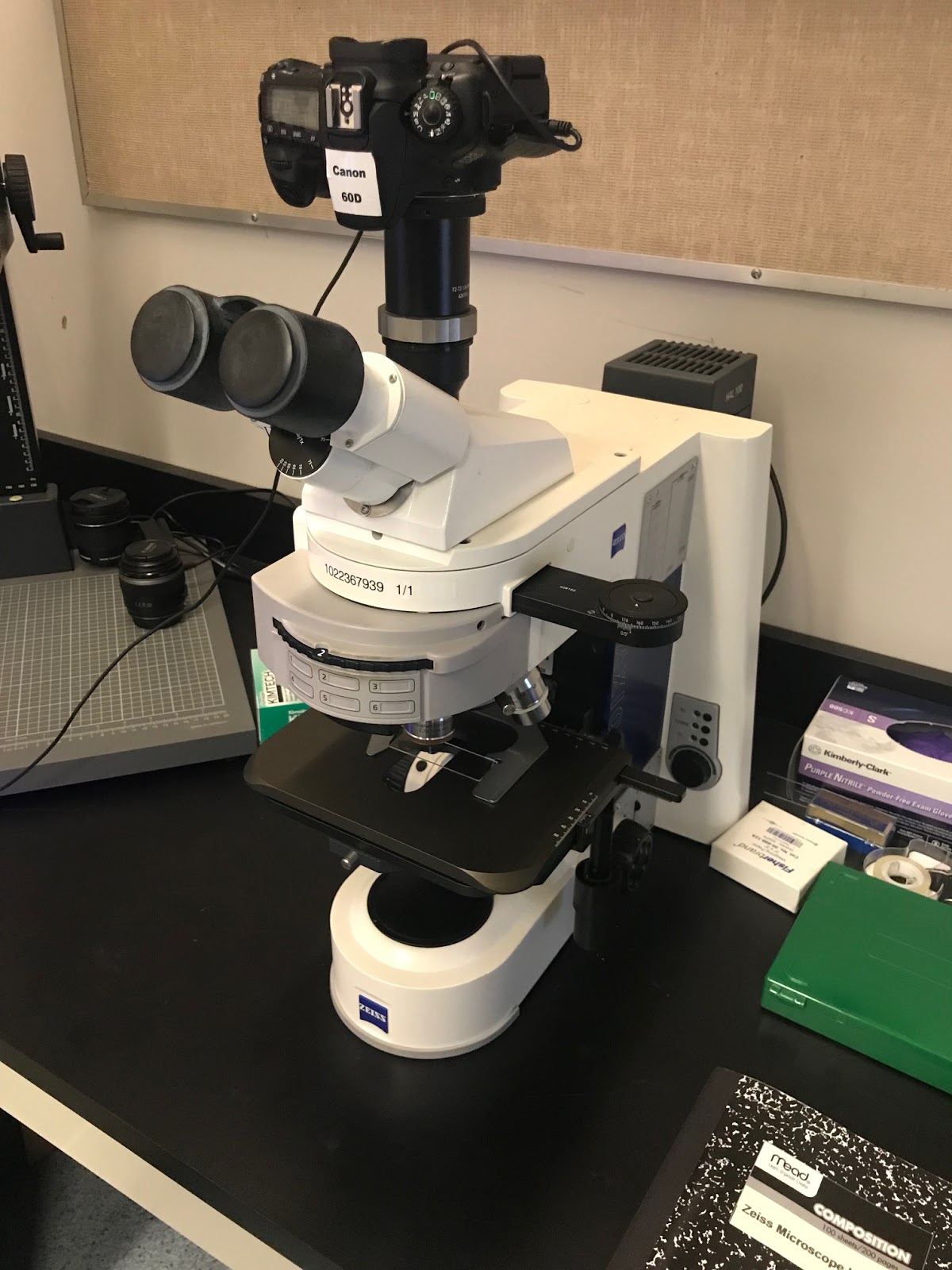 |
Stereomicroscope |
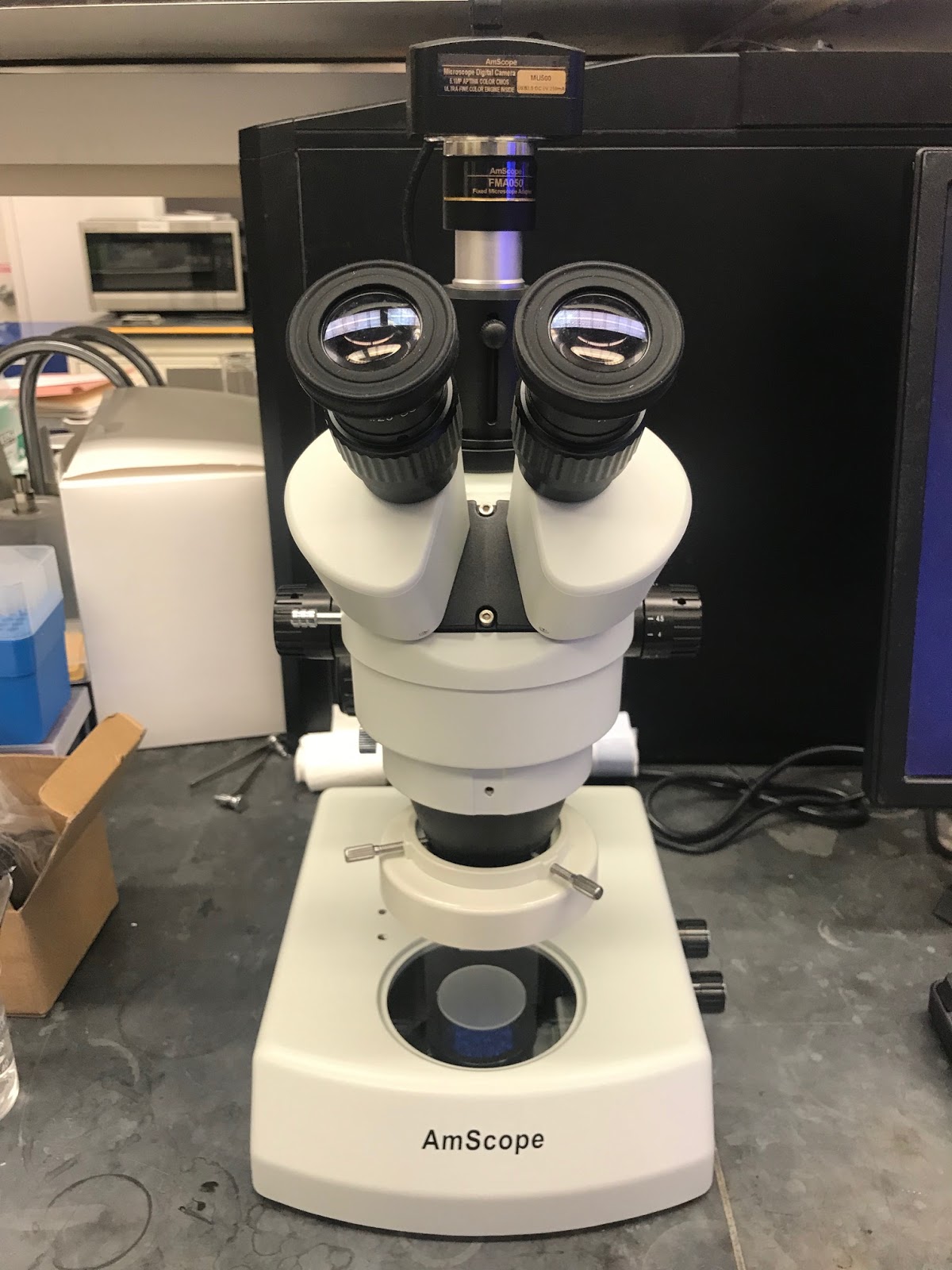 |
Ultramicrotome |
|
|
|---|---|---|
Drill Press, Vertical Bandsaw |
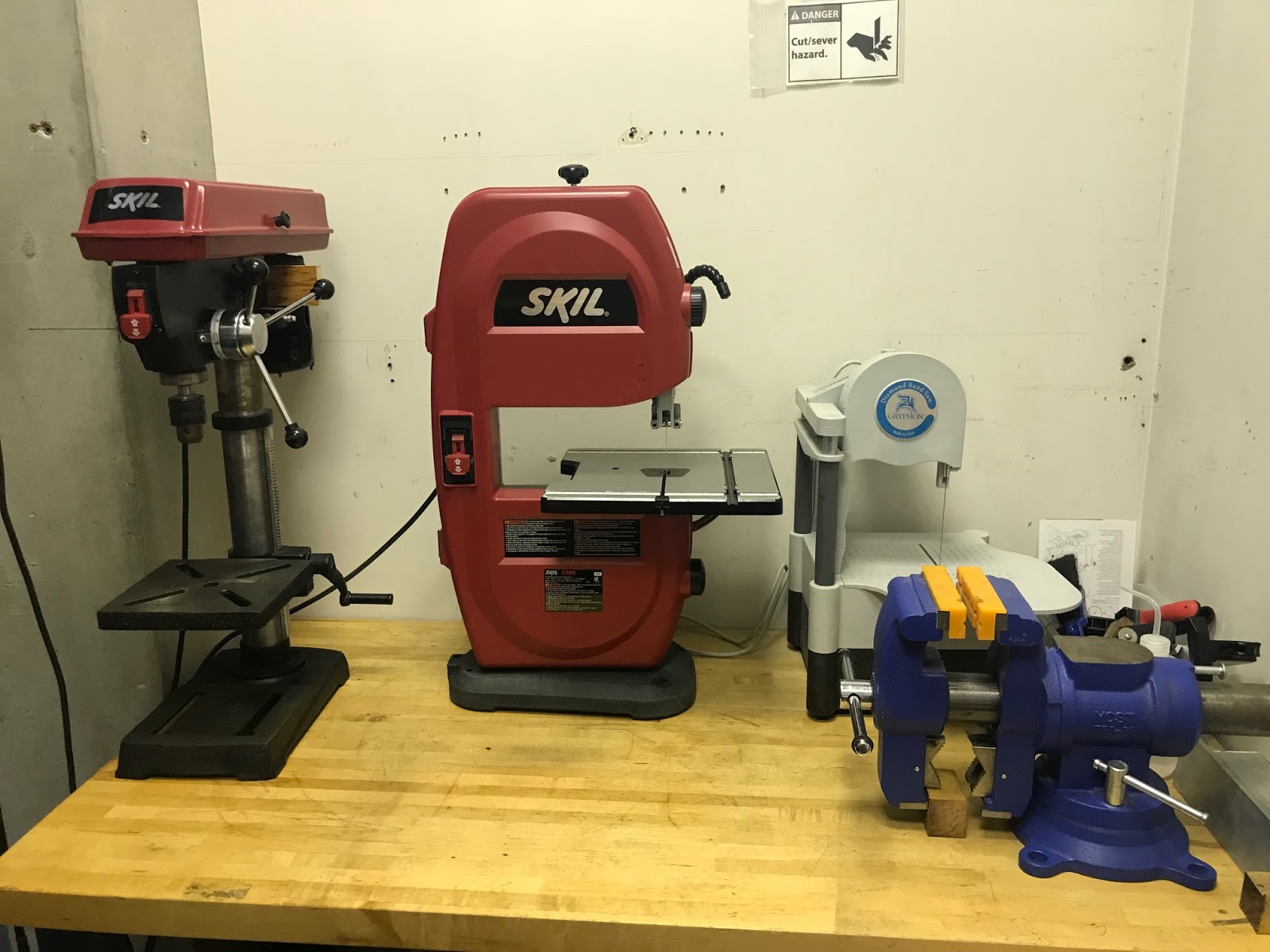 |
|
Tile Saw |
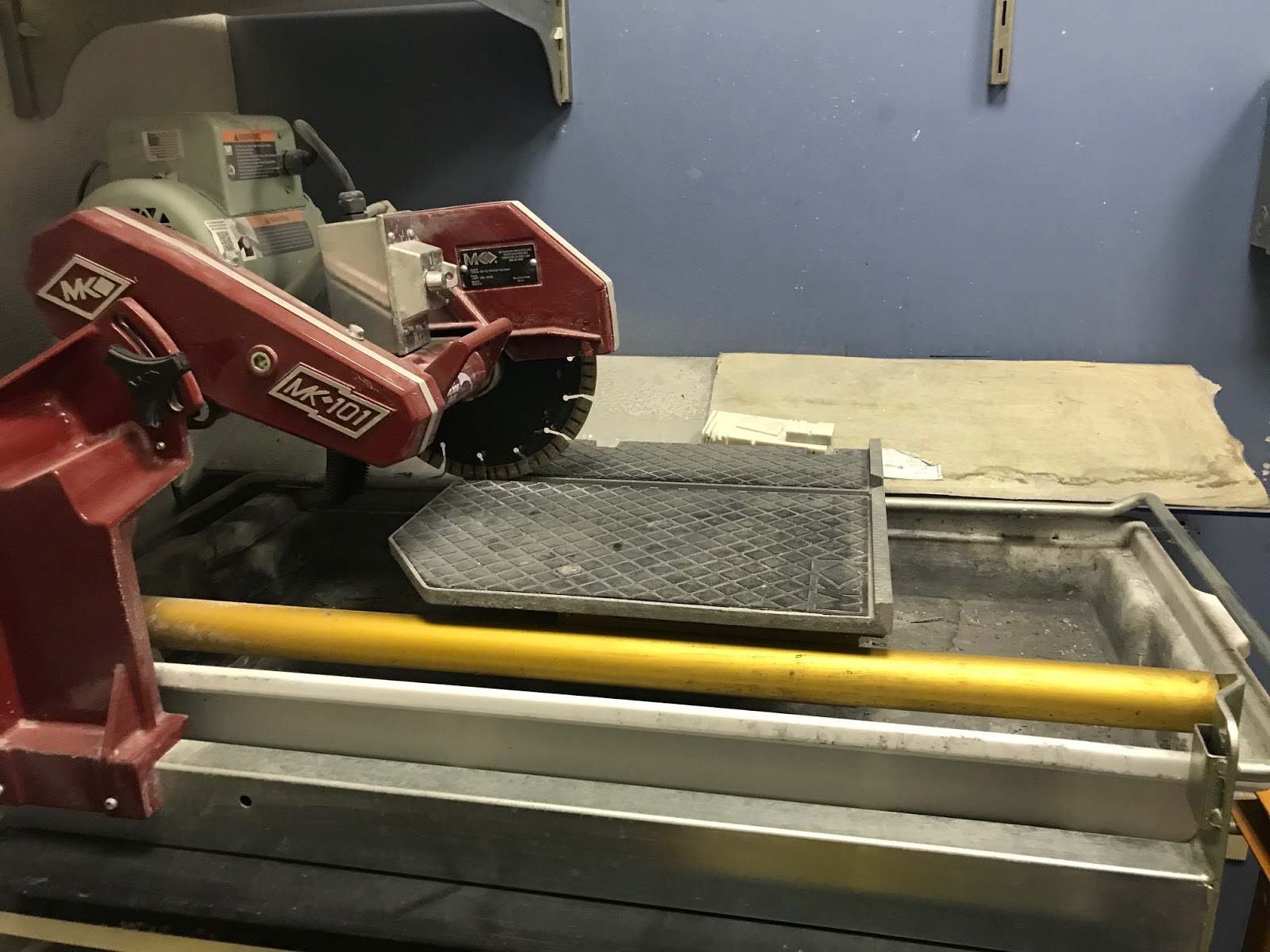 |
|
Dremel |
||
Sliding Microtome |